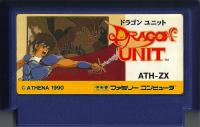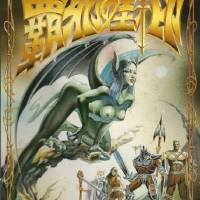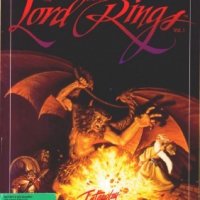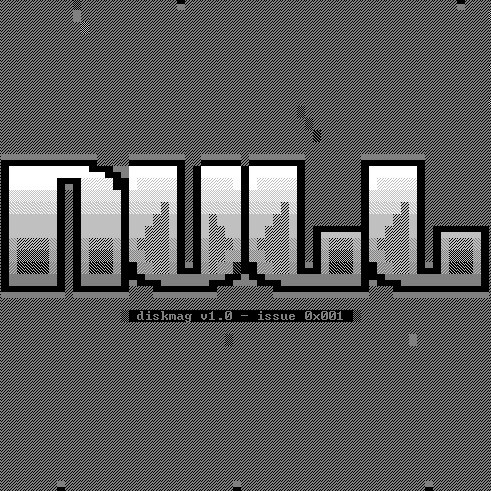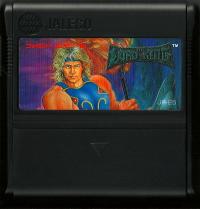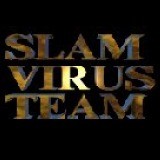Dragon Lord

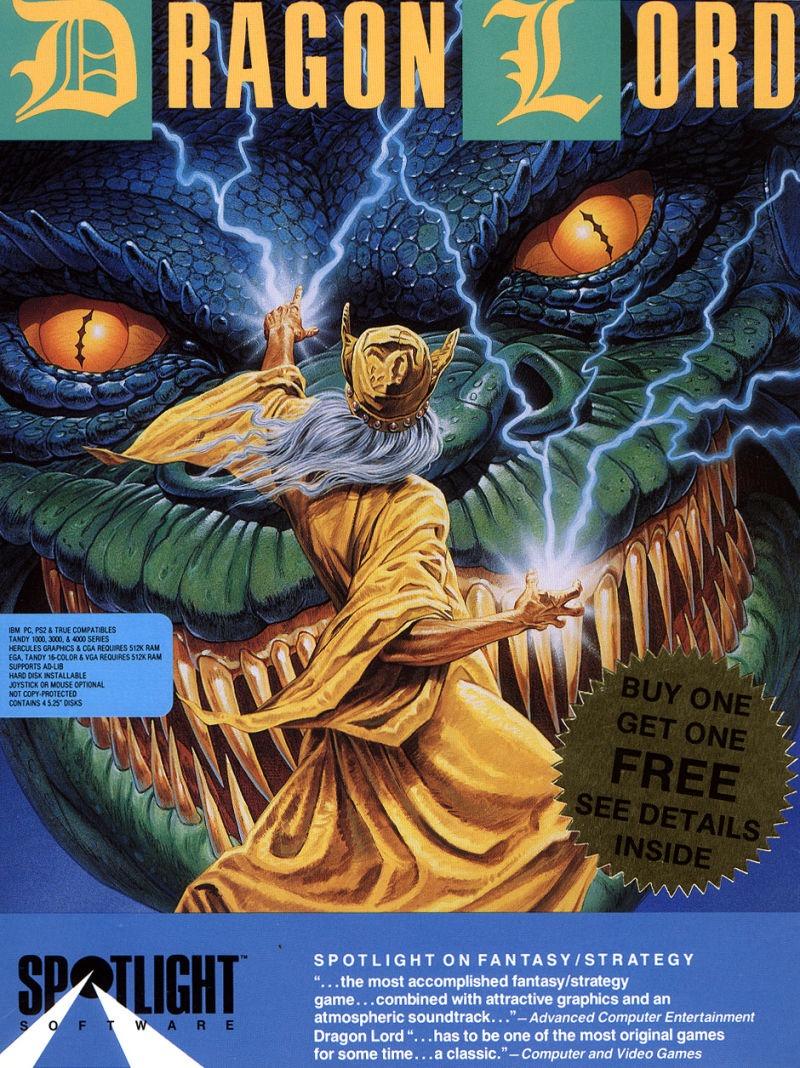
In its continuing effort to bring a range of European games to the American market via its budget Spotlight series, Cinemaware has hit upon one of the most original strategy games to be released in England during 1990. DRAGON LORD combines a completely unique spell-creating system, a small-scale strategy game, and a simple but enjoyable arcade sub-game into a gaming experience unlike most others you'll encounter. There are flaws to the design, but they are far outweighed by the pleasure and challenge the game presents. (This review is based on the Amiga version.)
DRAGON LORD begins with a beautifully-drawn opening landscape shot, replete with text scrolling from the waters of a fjord, all meant to provide a little story atmosphere as prelude to the game. The moody stereo background music builds slowly but surely, and the credits overlaid upon the magician's five-point star suddenly flash upon the screen.
A click of the mouse then puts you at the Disk Setup Check Screen. The game apparently auto-configures for use of an external drive, if available, and asks for a password from the Spell Book. (Remember which book to use; it's easy to forget and use the wrong document, and after three tries there's no recourse except a reboot).
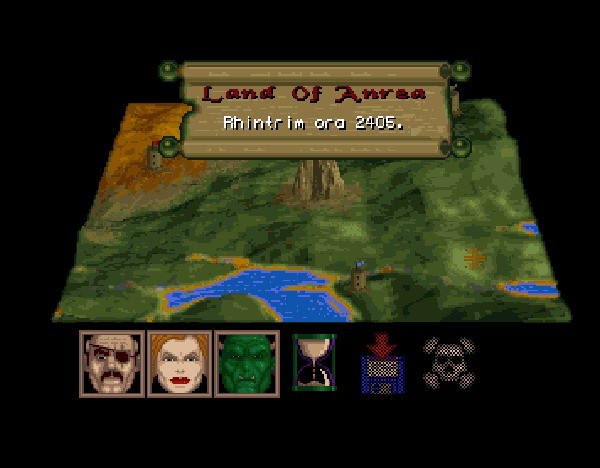
Note, however, that here is one of the first bugs in the design: I've never gotten the external drive to work with the game. If you put disk 2 in DF1:, it'll attempt to read, and you'll see flashes of red diagonal streaks on the screen, but the game will essentially lock up (this was true of the original European version, as well). The problem occurs on an A500 with 1Mb of RAM. Unfortunately, this means a certain amount of regular disk-swapping will have to occur during play.
After the password check, you're sent to the final configuration screen, where you can choose to play Bachim, Oureod, or Ametrin. Each player starts at a different location in the game, and can be set to either human or computer control, thus allowing for either multi-player or multi-character play (it's fun to choose two human players and gang both of them up against the computer player). Finally, the game begins.
DRAGON LORD is controlled by a simple icon system, which gives you access to an overhead map, dragon chambers, dragon's egg incubators, a library, a spell-mixing laboratory, and a trading screen. Each of these areas constitutes one aspect of the game, and functions independently of the others.
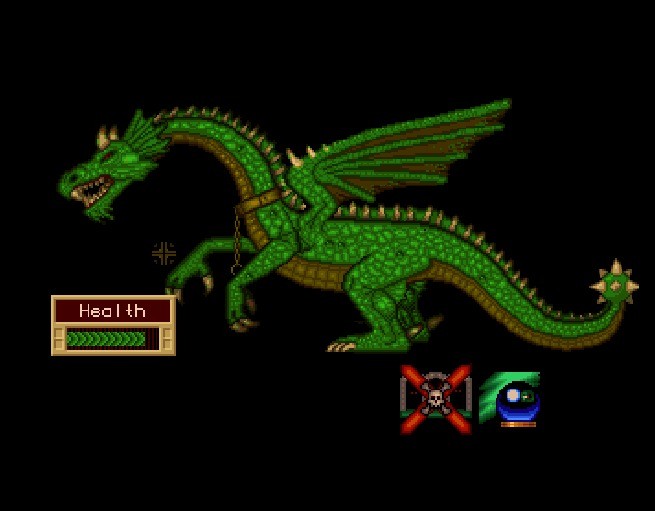
Let's go through them one by one:
1. In the map section, each of the villages in the land is displayed, along with the three players' main castles; you can click on a magnifying glass to focus on a particular area of the map in greater detail.
In the local detail map, you can: scroll around by clicking on the four-way compass rose; investigate a particular village in close-up by clicking on it (which loads a nice graphic screen representing the strength of the village by the number of residences drawn across it); and send dragons on missions. The last step down brings you to the village level, where spells can be cast on villages.
Villages prosper or die, depending on how they're cared for, and their allegiance to the players can be established by sending dragons out to conquer and keep them. Villages each have populations of a particular race, and both industrial and yeoman strength points to indicate their productivity. A village in a rocky area with high industrial abilities is likely to be a valuable acquisition, as it's going to be a good producer. A village with high yeomanry in the same kind of terrain might not be as good a bet. Village population size can be affected positively by the casting of the right spells, and negatively by the casting of destructive spells or by dragon raiding. Tax rates can also be adjusted on those villages allied with the player, and levels of revolt increase or decrease, depending on whether a dragon's been posted to protect the village, or the village has been subjected to regular raids, or the tax rates have been set appropriately.
When choosing a dragon to go on a mission, you can specify one of three different zeal levels. This affects the potential success of the mission, as well as the amount of damage the dragon is likely to suffer. Higher zeal levels may be necessary when a battle between your dragon and an opponent's takes place (most likely when you're battling over ownership of a valuable town). You can also select a "Training" level, which initiates an interesting arcade sub-game in which you run the dragon across the town, destroying defense systems and buildings. This arcade game is pretty tough, so beginning players with only one dragon may want to leave the actual dragon battles to the computer until some progress has been made in the game. Losing your only dragon early on is a recipe for guaranteed failure.
Periodically, due to raids, taxes, successes against opponents' dragons, or perhaps just plain good will, villages offer you money or other items. These can all be invaluable when it comes time to hatch eggs and mix spells.
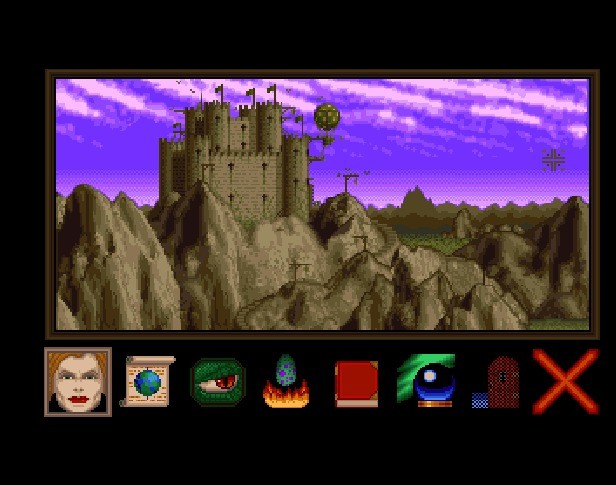
2. The second icon on the initial screen brings you to the dragon chambers; there's room in your barn for up to eight dragons. Clicking on doors behind which a dragon lurks brings up the "dragon investigation screen," where you can check the dragon's attributes, and cast spells to improve various attributes. Things like health, wisdom, strength, speed, disease, and even eyesight are measured by attributes, and the dragon's age is indicated as well.
3. The third icon leads you to the egg incubators, where up to four of your initial 20 eggs can be incubated at a time. On the right-hand side of the screen, the rate of incubation can be controlled by a wheel, which you click on and turn. Increasing the rate of incubation uses up your cash more quickly; running out of cash can result in a dragon chick that's dead in the shell. Spells can also be cast here to improve the dragon's abilities prior to its hatching. Experimentation will lead to discovery of whether casting spells on a dragon before or after it's hatched is more effective. Spells cast while the dragon's still in the egg affect the maximum levels it'll be able to reach once hatched. Slower incubation delays the release of a new dragon by more turns, but makes for a more powerful dragon in the long run.
4. The fourth icon opens the door to the library, where three different books can be checked. The green book is a record of monthly accounts; it lists how much you've spent, as well as remaining eggs, dragons, any rewards you might've garnered that month, remaining cash, and taxes collected, if any. Another important item reported in this book is a listing of fragments of the Talisman that you own. One of the goals of DRAGON LORD is to collect and retain all the pieces of a Talisman; complete guardianship of all three portions of this symbol results in final victory. Discovery of pieces of the Talisman is dependent on a dragon's visual abilities, which are brought into play every time a village or area has been conquered.
The second book (red) is a chronicle of events in Anrea, the land of DRAGON LORD. Ongoing battles are the main events reported here. Hostages can also be taken and rescued, barbarians discovered, and villages mastered or annihilated over the course of a month. Turning the pages reveals accounts of all these events. Other discoveries are made here, as well; it turns out that the different races are busy battling each other while you're fighting with other dragon lords, and sometimes allied villages can gain new territory for you without any intervention on their part (depending on their strength and abilities -- a small hint).
The last book (purple) documents your alchemical stores. All ingredients available are presented, with quantities detailed for each. Careful monitoring of this book is necessary so that you know when trade and/or search for more ingredients has become crucial.
5. Hang on there, we haven't even reached the main part of the game! The fifth icon in the initial set puts you in the alchemist's laboratory, one of the most original inventions in gamedom. The two shelves at the top of the screen are stocked with various bottles and jars, containing your magical stores -- plant, mineral, and liquid. These spell ingredients are documented in the included spell book (well, for the most part), and have various interesting qualities. Some ingredients are called "Directors," and have positive effects on the targeting powers of the spell being mixed. Directors are important for orienting the spell towards the proper target. Dragons, Eggs, Villages, and even the player characters are all potential targets for a spell.
More subtle are the "Affector" ingredients, which have positive and negative effects on a combination of the seven abilities that a target consists of. Each ingredient can have a number of combined effects, and those effects can be changed depending on whether the ingredient is cut, ground, or mixed, then condensed or heated. Putting a number of ingredients together is necessary to make a complete and effective spell. You can easily imagine how complex this process might be, and the side effects of ingredients, as well as their powers, must be taken into consideration when creating a spell.
Fortunately, DRAGON LORD includes, as a third document, a spell chart that outlines the positive and negative effects of each ingredient in each of its possible states. Post this chart on a wall above your monitor for careful study and mastery. Learning how to handle ingredients is the most complex aspect of the game; one person I talked to even put together an Excel spreadsheet to understand the relations between spell ingredients! Part of the fun of DRAGON LORD is to become as familiar with, say, Mionacal as you might be in real life with Tylenol or Menthol. Knowledge of the properties of each ingredient contributes, over the long term, to the depth of gameplay.
The apparatus for mixing ingredients set up below the shelves is beautifully drawn and animated. You can adjust the controls on the condenser and bunsen burner for different rates of heating and condensing, and can then bring the jar or bottle of an ingredient to the top of the appropriate grinder, cutter, or mixer. (There's also a fourth container into which you can just drop an ingredient straight). The liquid in the jar at the end of the apparatus changes colors and bubbles at different rates, depending on the mixture and final potency of the spell being created. Anyone who played with a chemistry set as a kid will be enchanted with this part of the game; you can have many hours of fun just trying out different combinations of ingredients, writing recipes down as you go. (The manual includes a bunch of basic spells to start with, useful for those who get easily frustrated, but unfortunate in that, like hints for adventure or CRPG games, they give away one of the most intriguing aspects of the game.) Once finished mixing a spell, you can click on an icon to choose the target for casting.
6. The last choice you can make involves trading with someone at the door. A pair of red eyes will be apparent on the seventh icon in the initial row if a trader awaits your pleasure. Trading is a simple process of selecting a number of items for sale and paying the necessary amounts. First impulses might lead you to buy up whatever is offered, but careful management of limited cash early in the game is important; by all means, investigate each trader's wares, but be conservative in purchases until a bunch of dragons are out hunting down villages, insuring that taxes will be collected to pay for spell ingredients, heating for the incubators, and so on.
Having made all the choices for a turn in each of these six areas, you then return to the main overhead map screen, where the month and year of the game are displayed, and hourglass and disk icons are available for ending a turn and saving the game. Game saves can be made at the beginning of each turn, on a pre-formatted disk. Fortunately, unlike many European designs, a relatively standard file requester appears, and more than one game can be saved to a disk.
Once a turn has been finished, the game animates the actions that all three players have taken for the turn; you can witness the battles and see text descriptions of the results before starting the next turn. These messages appear without any pause option, and sometimes scroll by too fast to catch. Useful and important information is often presented this way, and it can be quite frustrating to see a message flash by before you've finished reading it.
The main flaws in DRAGON LORD have to do with the kinds of problems generally characteristic of European designs. The game comes on two copy-protected disks (which fortunately don't need to remain write-enabled), and is additionally protected with a manual word-lookup scheme. It is clearly designed to work primarily on minimal Amiga hardware, and makes no use of equipment like extra RAM, or a hard disk, or external floppy drives (despite clear indications in the configuration screen that at least an external floppy drive will be recognized). Both mouse and joystick are supported for different elements in the game, but no option for keyboard use is implemented. The game runs only on Amiga 1000s, 500s, and 2000s. The computer opponents' artificial intelligence sometimes seems flakey, and is hard to comprehend.
However, despite these problems, DRAGON LORD is a truly enjoyable and original game. The music, graphics, and sound effects are of very high quality, and the interface is simple and easy to manage. The spell-creation system is unique in the world of computer gaming, and the strategy game is challenging and varied. Towns in the game can be destroyed, and new ones can spring up, making for real variety in play from game to game. And finally, the option to use the computer as a mediator among three human players makes DRAGON LORD a real treat for play with friends. If you can tolerate the problems mentioned above, and you have enough patience to learn how to manage the difficult initial conditions presented when the game first starts, you'll find plenty here to think about and play with.
DRAGON LORD is published by Cinemaware and distributed by Electronic Arts.









